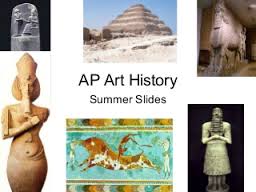
[…]I cannot think of any discipline more inherently interdisciplinary than art history. Through the context of artworks, we study history, anthropology, sociology, war and politics, biography, literature, theology and critical interpretation, to name a few of the theoretical angles. But we also look at optics (for instance, in analyzing single-vanishing-point perspective), chemistry (how paint was prepared), neuroscience (what happens in the brain when it encounters art), geometry (why some works, based on triangular composition, feel more harmonious), physics and engineering (how Brunelleschi’s dome stays up), and much more. It is a great subject for those who can’t decide what to study. But it is particularly strong in opening one’s mind up to alternative viewpoints
Psychotherapists Dr. Albert and Lea Mrgole underscore the importance of learning how to learn, that key tool that comes with studying the humanities. “Relevant to each area of work is the ability to acquire knowledge throughout life, attitude to learning and knowledge, which requires an awareness that knowledge changes fast and its development needs to be followed. This means that we need certain traits and skills: adaptability and plasticity, flexibility, curiosity, mobility, creativity, independent thinking.”
That is not to say that you won’t develop these faculties if you study STEM subjects. But humanities subjects are built upon them — this is why a liberal arts education has been considered the finest one can have for nearly a century. This teaches you not the specifics of how to manipulate X to produce Y, but how to teach yourself how to do whatever you need to do in the future. This might be manipulating X to produce Y, or it might be adapting to having to manipulate X and Z to produce Y, or to have the flexibility and imagination to think of an entirely new way to produce Y, or to realize that Y needn’t be produced at all.
For art history, a comfort in a variety of disciplines is necessary. As Nobel Prize-winner Dr. Eric Kandel, a neuroscientist, told me, the biggest breakthroughs in any field come from those approaching from a different discipline, from outsiders: “This is true in all areas. It’s good to have an outside perspective. . . . Within a field, the focus can be very narrow, so it’s good to have some fresh insight.” It is uncommon to find interdisciplinary thought encouraged in the STEM subjects, the hard science fields. You don’t often get a mathematician told to approach a problem from a chemist’s perspective, or an industrial engineer looking to molecular biology to reach a new solution.
Art history aside, humanities (when taught well) teaches students how to learn. How to teach themselves, to think outside the box, to accept and appreciate different perspectives. Appreciation for, and tolerance of, different cultures is part and parcel of this. Restricted, drilled-in viewpoints rarely produce anything fruitful or new; they just keep treading the same wheel and, worse, can produce intolerance. As an employer, it’s not enough to have an army of rote peons who think the same way — you need those who dream, as well. Without studying the humanities, we encourage robotic, repetitive behaviors, systems, ways of thought. Our ways of seeing are limited. Our civilization becomes homogenized in its practice and concepts. And the arts are the highest achievement of a civilization for which basic needs are met. Without the humanities, our civilization narrows and becomes less civilized. Without the arts, the zenith of what civilization is capable is decapitated.
(From Noah Charney, salon.com, 1/15/17)
Noah Charney is a Salon arts columnist and professor specializing in art crime, and author of "The Art of Forgery" (Phaidon).
